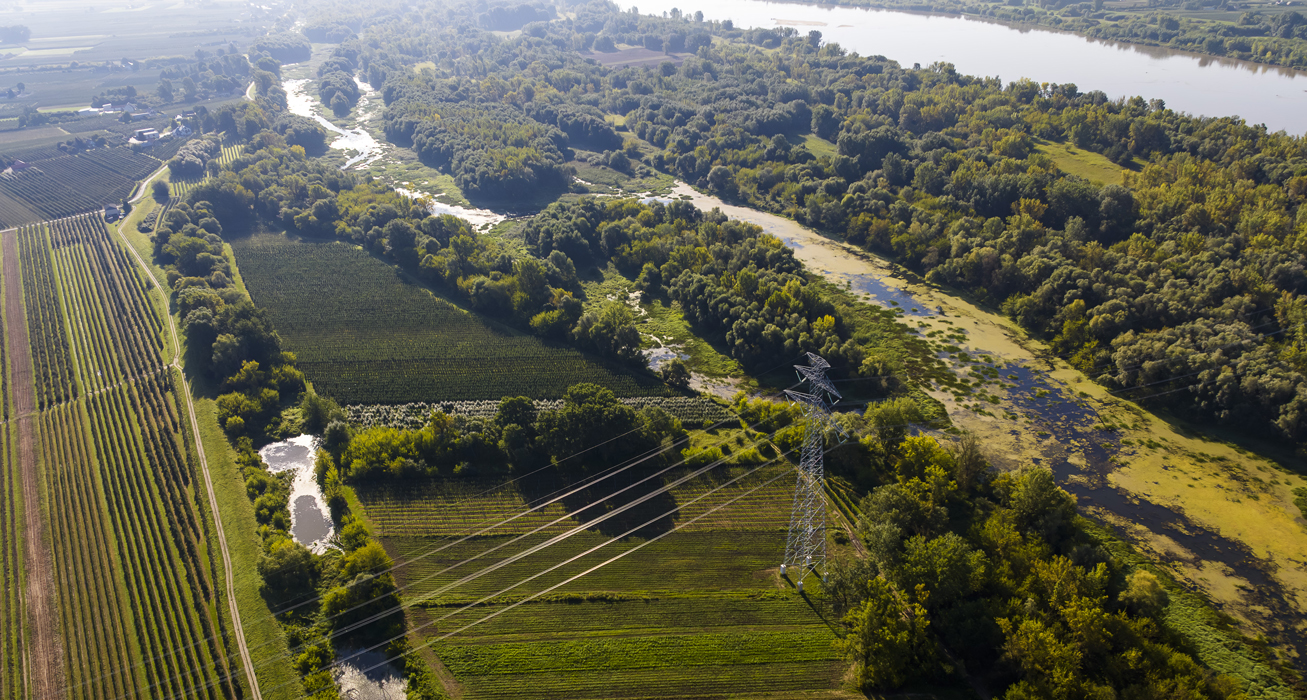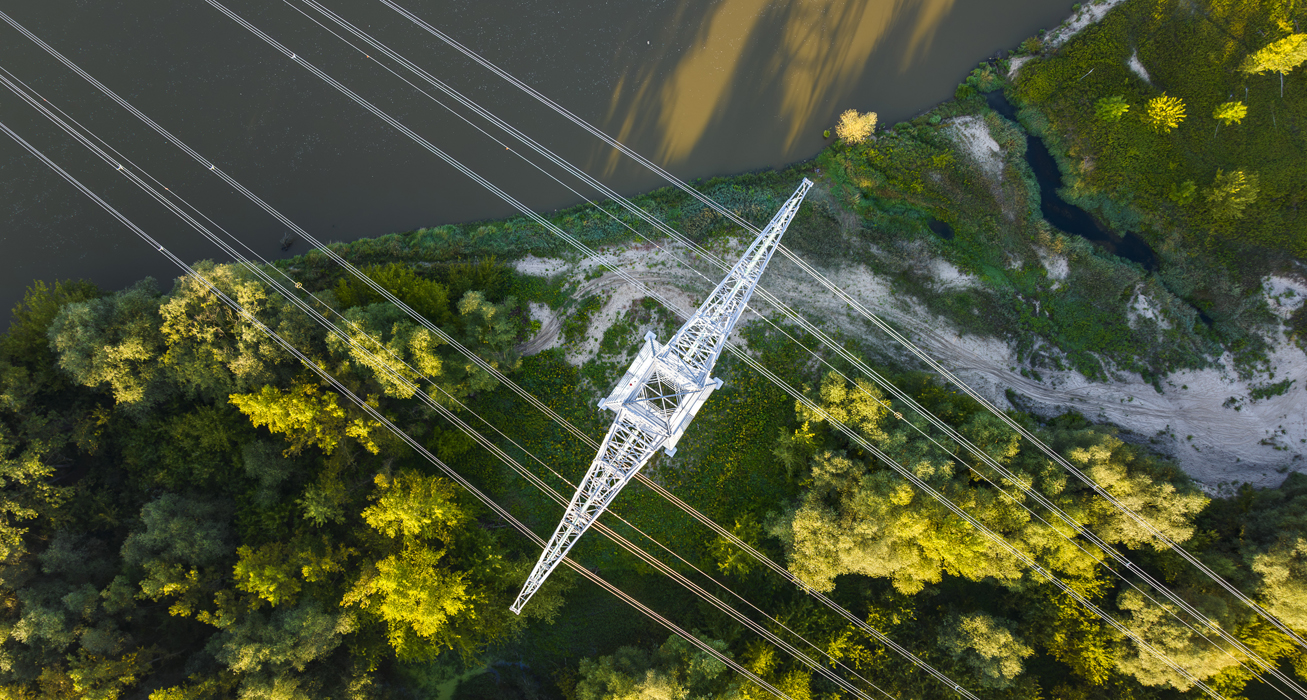The environmental management system governs our company’s activities in the area of environmental impact at all levels of management. In the environmental policy document, the Management Board declared to ensure that the Transmission System Operator’s activities are carried out with respect for the natural environment. The tasks carried out by the units are subject to regulatory arrangements including procedures and instructions that take into account legal requirements and good practices. The most important of these documents set out the rules for waste management and response to hazardous substance leakages. Wherever required, PSE has implemented fire safety manuals as part of prevention against the emission of environmentally harmful gases and discharge of fire water Our agreements with contractors include environmental protection clauses. Investments provide for the use of modern technologies and environmentally friendly solutions. The company carries out ongoing supervision of the implementation of environmental requirements, performs audits and inspections of PSE’s facilities and work in progress. Each unit is responsible for complying with environmental requirements within the scope of its own tasks. Once a year, all offices and departments independently carry out an assessment of the fulfilment of these requirements, taking into account legislation, administrative decisions, company regulations and agreements concluded. Information from the compliance assessment and actions on non-compliance are reported to the Management Board.
ENVIRONMENTAL IMPACT AND CLIMATE ACTIONS (E)PSE’s priorities in the area of environmental protection
Key figures(as at the end of 2023)
The priorities of PSE environmental actions are set out in the document Policy for an Integrated Environmental and Occupational Health and Safety Management System.
Our company strives to reconcile reliable and efficient operation of the power system and its development with respect for the natural environment and public interest. In furtherance of the above objectives, we are committed to:
- pollution prevention and continuous efforts to improve natural environment protection, including through hazard identification and risk management,
- monitoring the work environment in the context of the natural environment,
- meeting the legal and other requirements applicable to the company,
- improving the skill of employees, empowering their roles and engaging them in activities promoting the environmental protection,
- developing and modernising the grid infrastructure in a way that ensures the respect for landscape, protected areas and areas of special natural values.
The goals arising from PSE’s policy are translated into operational objectives implemented by business units. They are accounted for and updated on an annual basis. In 2023, 8 out of 9 objectives were fully met, and 1 was partially achieved (the target number of work environment observation reports per worker was not met).
Environmental management system
Environmental aspects
The company has identified 12 environmental aspects, four of which are significant:
- electromagnetic field emissions,
- noise emissions,
- waste generation,
- hazardous substance leakage (in an emergency situation).
Environmental aspects were last reviewed in March 2024 – significant aspects have remained unchanged. Aspect management is implemented in the relevant organisational units. Directions of action are approved by the President of the Management Board.
The significant aspects are PSE’s priority environmental areas. To ensure that the Transmission System Operator’s activities comply with environmental protection regulations, constant monitoring is carried out on the premises of the facilities operated, as well as during the implementation of investment tasks, and measures are introduced to reduce harmful effects on the environment. In order to update and consolidate knowledge and skills in the field of environmental protection and to familiarise employees with technical and organisational solutions in this area, periodic training courses in environmental protection are held. Topics covered in the training include legislation on environmental protection, environmental aspects, waste management, hazardous substance leakage response, noise emissions into the environment, PEM emissions into the environment, air emissions, water and sewage management.
Electromagnetic field emissions
We pursue a number of activities which further the achievement of the following objectives:
- meeting the permitted electromagnetic field levels in the environment outside the line right of way, as required by law,
- selecting locations for new investment projects that make it possible to limit the construction of power facilities in residential areas,
- maintaining the efficiency of systems and equipment,
- modern technological solutions for equipment and systems.
Noise emissions
We perform tasks that contribute to meeting the permissible noise levels in the environment as required by law, such as:
- selecting network infrastructure locations to limit the construction of power facilities in residential areas,
- quality inspections of the works performed,
- maintaining efficient systems and equipment.
Waste generation
Waste generation is identified at PSE as a significant aspect. The rules for handling waste generated from operations at network facilities, the head office and field units are provided for in the PSE S.A. Waste Management Manual. Employees are informed about updates and amendments to the document, which result from adaptation to applicable provisions of law.
According to the PSE S.A. Waste Management Manual, decisions on the methods of physical disposal of assets are made by the asset manager. The transfer of assets to the storage reserve is analysed first, followed by the transfer of parts of the assets to the storage reserve, while some parts are classified as waste. Ultimately, the asset is classified as waste in its entirety.
In order to enable selective waste collection, the head office building, branch offices and substations have been equipped with containers for selective waste collection. Waste is collected at the site of its generation, until it is collected by authorised entities. Waste collection locations, i.e. waste storage sites and containers where specific types of waste are collected are properly marked. One of the regular training points for the company’s employees is to present the rules and responsibilities for waste sorting. Correct sorting of waste is also checked during on-site inspections carried out at facilities.
The waste management manual applies both to waste generated by PSE and waste generated by third parties in the course their operations. It is applicable in the stages of operation, disaster recovery, investment, overhaul and decommissioning.
Contracts with third parties include an HSEQ appendix which includes specifies waste management rules for contractors. To ensure that contractors’ waste management activities comply with the applicable regulations, constant supervision is maintained on the premises of operated facilities and during the execution of investment tasks.
The amount of waste generated depends on the extent of operational work carried out on the power grid, the occurrence of failures and investment projects in progress. In 2023, the increase in the weight of transferred hazardous waste was related to the disposal of transformer waste from the following substations: Grudziądz Węgrowo, Wielopole, Wrzosowa and, in larger quantities, transformer insulating oil from the Grudziądz Węgrowo, Olsztyn I and Lubocza substations.
Hazardous substance leakage
A leakage of a hazardous substance is another of the aspects identified as significant. It occurs in emergency situations. PSE is working to reduce the likelihood of an emergency through preventive measures, appropriate operation of facilities and maintaining readiness to reduce the environmental impact of failures caused by the company-owned infrastructure.
Due to the possibility of failure of equipment containing hazardous substances that could cause pollution and the associated risks, the company makes every effort to reduce the adverse impact on the environment as far as possible. To this end, the Instructions on hazardous substance leakage response and the use of sorbents during leakage incidents at PSE S.A. grid facilities was implemented for use at the sites of grid assets. Instructions on hazardous substance leakage response were developed for the head office and field units.
Each site has been equipped with environmental first-aid kits – portable sorption kits for cleaning up oil and acid leakages – and safeguards to prevent leakage from spreading into the environment.
There are also workshops on handling hazardous substances, storing hazardous materials, as well as practical training in the use of handheld firefighting equipment and hazardous substance leakage clean-up activities. As part of the exercise, hazards that may arise at the substation are discussed and the practical component is delivered, which includes mock hazardous substance leakage response and exercises on how to use available sorbents.
Equipment with a considerable amount of electrical insulating oil, i.e. transformers, autotransformers, reactors , are provided with suitable protection devices, i.e. oil pits, which in case of an uncontrolled leakage are designed to receive the emergency discharge of oil – and fire water, if any. In 2023, there was no significant electrical insulating oil leakage with negative environmental impacts.
Other environmental aspects
Discharge of wastewater into waters or soil
The wastewater generated as a result of our operations is discharged into the combined sewerage system, septic tanks, or, after treatment in a biological treatment plant, into waters or soil. Biological wastewater treatment plants using various treatment methods, including activated sludge and spray bed, are in operation at our grid facilities.
When treated, the sewage meets the requirements of the law and water management permits.
We strive to minimise water consumption
Water consumption at our company’s headquarters and substations is low. Nevertheless, we monitor water consumption under the Environmental Management System. Water is supplied to substation facilities from our own deep intakes and from municipal water mains.
In 2023, as in previous years, no fines were imposed on PSE for non-compliance with environmental laws and regulations.
Pollution prevention and control
In order to prevent negative environmental impacts, PSE has established a number of courses of action, such as:
- maintenance of systems and equipment, as well as vehicles and machinery in proper working order,
- monitoring of gas consumption, fuel consumption, VOC-containing preparations, water intake,
- checks, inspections, internal audits,
- post-failure inspection of equipment,
- reducing the risk of an emergency through preventive measures,
- selection of locations to limit the construction of power facilities in close proximity to residential areas,
- optimisation of consumption and reduction of unnecessary consumption of fuel, electricity, water,
- educational activities, including workshops, training and outreach campaigns,
- participation in nature conservation projects,
- environmental compensation measures.
Remediation processes for negative impacts
In the event of negative environmental impacts, PSE is responsible for its own actions and assumes limited liability for the actions of contractors acting on behalf of the company and takes remedial actions.
Complaints can be made through the communication channels indicated on the company’s website. The company remedies the effects of negative impact in accordance with applicable laws. Stakeholders do not participate in the process of creating a complaint mechanism. Internal audit is one of the tools for monitoring the complaint mechanism.

